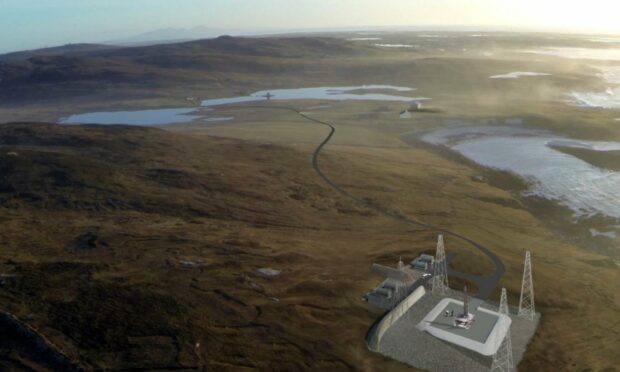A row has erupted over the true amount of CO2 emissions caused by Scolpaig spaceport.
The Comhairle’s Environmental Impact Assessment (EIA) may not have taken into account the full impact of the spaceport on nearby flight routes.
The EIA, which was vital in leading to the spaceport’s planning application being approved, assessed future launches as leading to 14 tonnes of CO2 emissions annually.
This, the EIA states, would be “equivalent to less than 8 typical cars”.
That figure was reached through calculating the amount of fuel the rockets would use during each launch.
But a report from the company behind the spaceport, QinetiQ, draws attention to the project’s wider impact on climate change.
Because Scolpaig spaceport’s launches will affect flight paths, that means routes will have to change.
An altered route means more fuel burnt.
QinetiQ’s report, released in May, says that these knock-on effects could lead to 413 tonnes of CO2 emissions per year.
That’s over 30 times the emissions taken into account in the EIA.
And, the report says, this is “likely to increase by 2% year on year”.
‘This difference is not trivial’
Retired engineer Colin Anderson, part of the Friends of Scolpaig group opposing the spaceport, has addressed the discrepancy in a letter to the Comhairle’s Planning Application Board.
“This difference is not trivial,” he said.
He called the Comhairle’s actions “troubling”.
The Comhairle says that, “while the figures in the ACP Options Appraisal vary from those in the EIA, the resulting effect on climate change would not alter significantly”.
“These figures would not have changed the planning assessment of the issue, the significant weight given to the harm identified, or alter the overall assessment in the planning balance.”
The Comhairle’s spokesperson also stressed that the figures given in QinetiQ’s report are an “initial high-level ‘worst case’ estimate”.
An upcoming “subsequent stage” will see more analysis, they say, adding that there will be an “appropriate time” for “stakeholder and community consultation on environmental impacts and concerns”.
More local reporting from the Western Isles:

Conversation